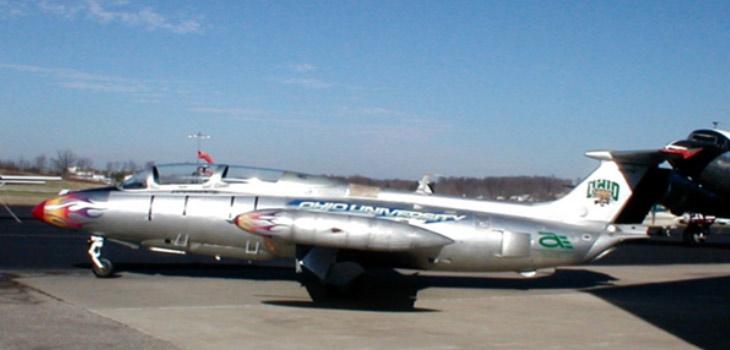

Since 1963, the Avionics Engineering Center (AEC) at Ohio University has been on the cutting edge of radionavigation system design, development, implementation and flight testing. In 2000, we augmented our fleet of propeller and turbo-prop aircraft with our first jet, an Aerovodochody L-29 Delfin jet from the Czech Republic.
One of the first research projects for the jet was GPS/INS integration testing. With its high altitude, high speed and high dynamic capability, the Delfin provides Ohio University the opportunity to test deeply coupled GPS/INS integrations under extreme flight conditions. For example, the aircraft can be made to execute roll maneuvers and the impact of the subsequent loss of GPS tracking (during inverted flight), and its impact on the integrated solution can be measured.
Specifications:
- Type: Turbojet engine, training/reconnaissance aircraftL29 Delfin
- Engine: Motorlet M-701, 1962 lbs. thrust
- Seats: 2
- Dimensions: Wingspan 33'10", Length 35'5", Height 10'2"
- Max takeoff weight: 7826 lbs.
- "G" Limits: +8/-4
- Fuel capacity: 343 gallons
- Maximum speed: 510 mph.
- Cruise speed: 275 mph
- Maximum altitude: 36,000 ft.
- Maximum range: ≈500 nm.
Research equipment/capabilities:
- Belly pod for mounting sensors and equipment
- LCD display and keyboard/mouse in aft cockpit
- Honeywell HG-1150 navigation grade inertial reference unit
- Electrical power available:
- 100A @ 27.5VDC
- 2 x 2A @ 115VAC, 400Hz
- 2 x 2A @ 3-phase 36VAC, 400Hz
- L1/L2 GPS antenna and receiver
